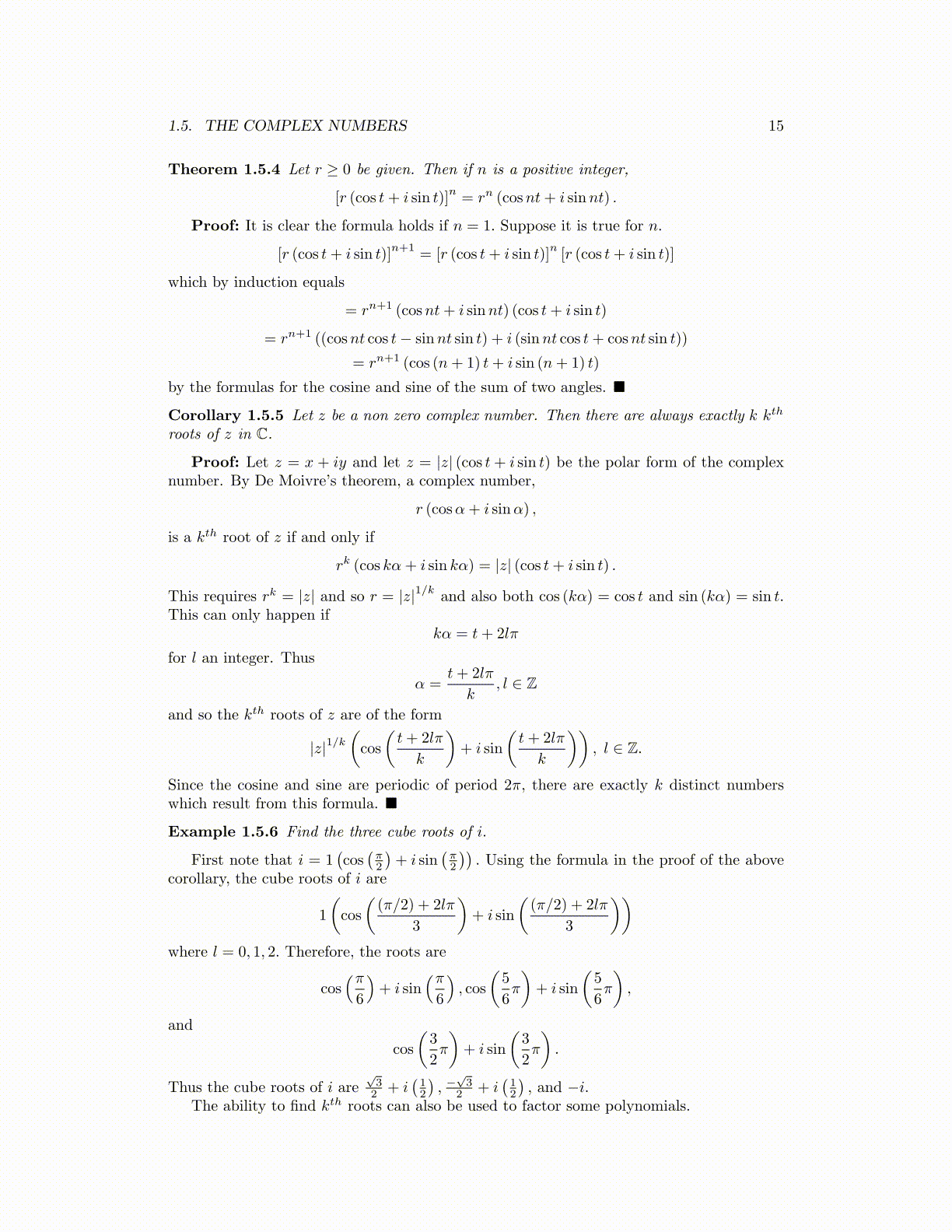
1.5. THE COMPLEX NUMBERS 15
Theorem 1.5.4 Let r ≥ 0 be given. Then if n is a positive integer,
[r (cos t+ i sin t)]n= rn (cosnt+ i sinnt) .
Proof: It is clear the formula holds if n = 1. Suppose it is true for n.
[r (cos t+ i sin t)]n+1
= [r (cos t+ i sin t)]n[r (cos t+ i sin t)]
which by induction equals
= rn+1 (cosnt+ i sinnt) (cos t+ i sin t)
= rn+1 ((cosnt cos t− sinnt sin t) + i (sinnt cos t+ cosnt sin t))
= rn+1 (cos (n+ 1) t+ i sin (n+ 1) t)
by the formulas for the cosine and sine of the sum of two angles. ■
Corollary 1.5.5 Let z be a non zero complex number. Then there are always exactly k kth
roots of z in C.
Proof: Let z = x + iy and let z = |z| (cos t+ i sin t) be the polar form of the complexnumber. By De Moivre’s theorem, a complex number,
r (cosα+ i sinα) ,
is a kth root of z if and only if
rk (cos kα+ i sin kα) = |z| (cos t+ i sin t) .
This requires rk = |z| and so r = |z|1/k and also both cos (kα) = cos t and sin (kα) = sin t.This can only happen if
kα = t+ 2lπ
for l an integer. Thus
α =t+ 2lπ
k, l ∈ Z
and so the kth roots of z are of the form
|z|1/k(cos
(t+ 2lπ
k
)+ i sin
(t+ 2lπ
k
)), l ∈ Z.
Since the cosine and sine are periodic of period 2π, there are exactly k distinct numberswhich result from this formula. ■
Example 1.5.6 Find the three cube roots of i.
First note that i = 1(cos(π2
)+ i sin
(π2
)). Using the formula in the proof of the above
corollary, the cube roots of i are
1
(cos
((π/2) + 2lπ
3
)+ i sin
((π/2) + 2lπ
3
))where l = 0, 1, 2. Therefore, the roots are
cos(π6
)+ i sin
(π6
), cos
(5
6π
)+ i sin
(5
6π
),
and
cos
(3
2π
)+ i sin
(3
2π
).
Thus the cube roots of i are√32 + i
(12
), −
√3
2 + i(12
), and −i.
The ability to find kth roots can also be used to factor some polynomials.